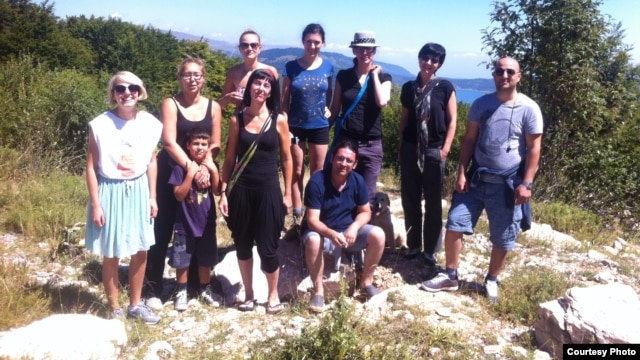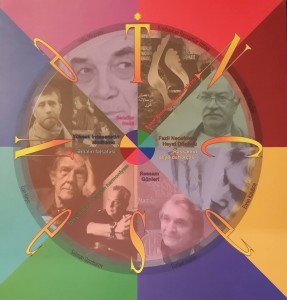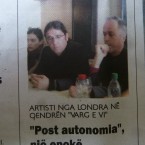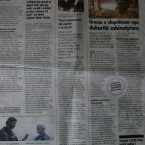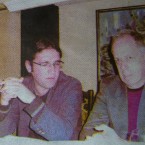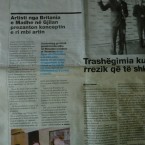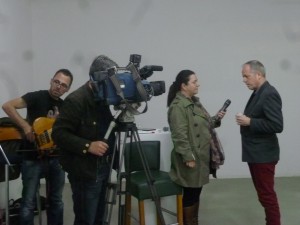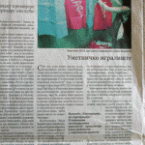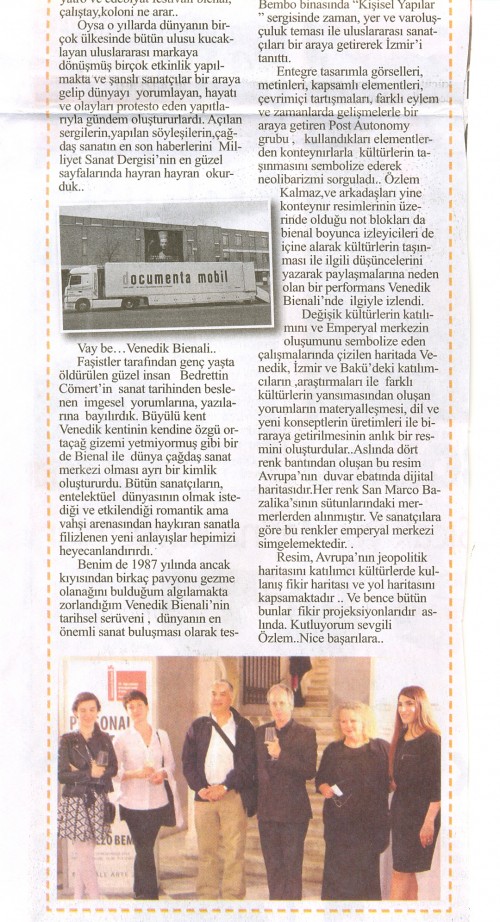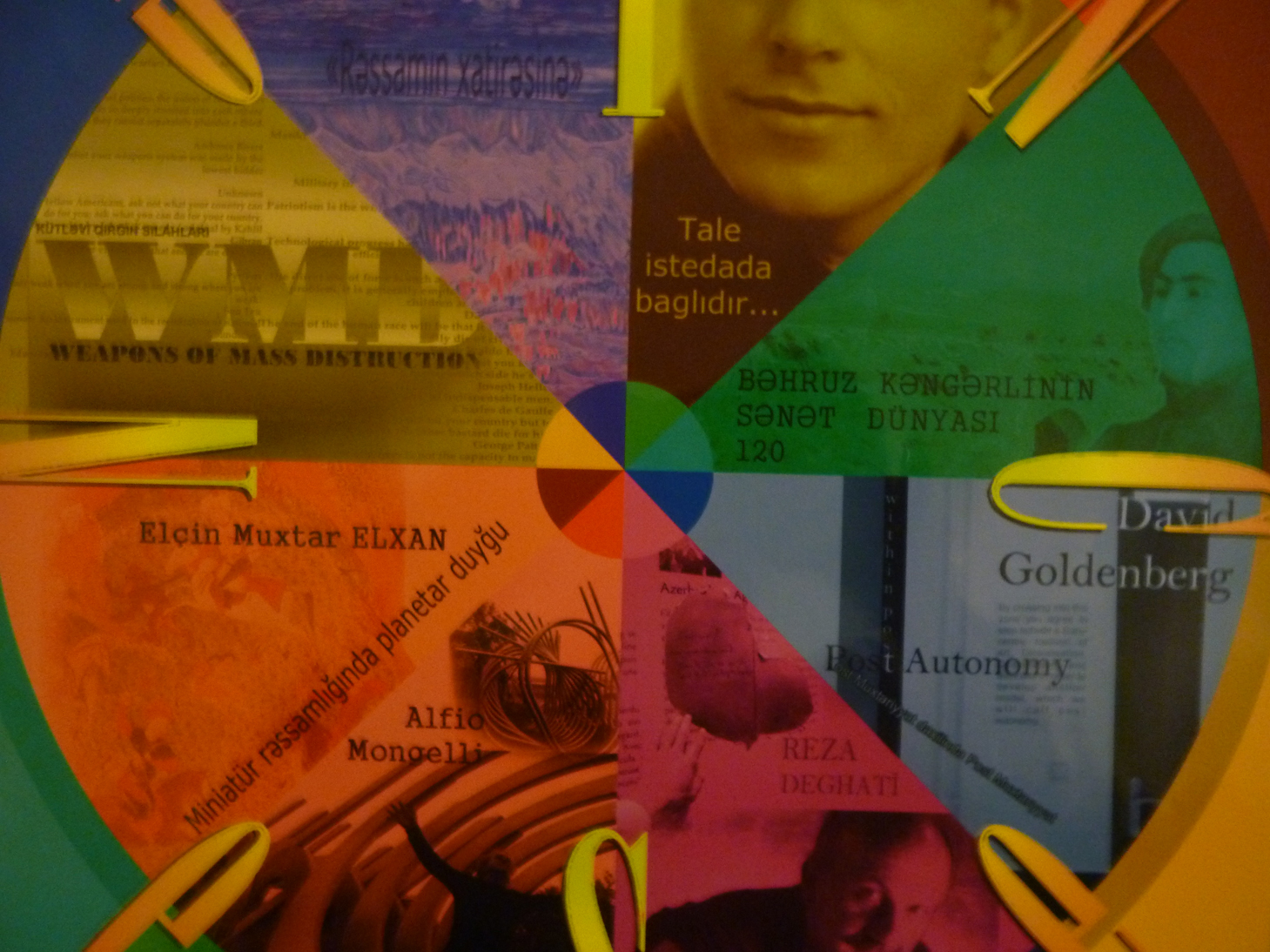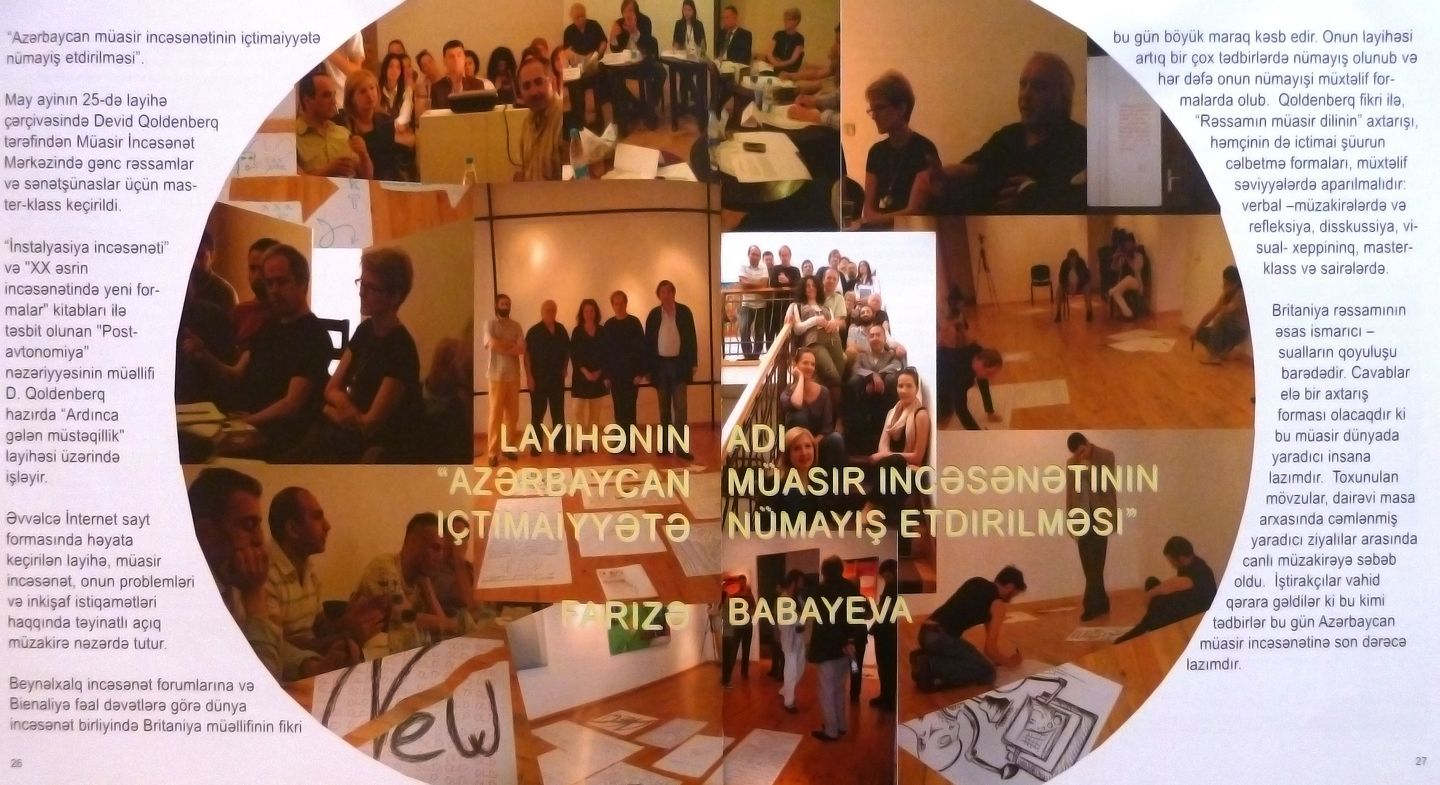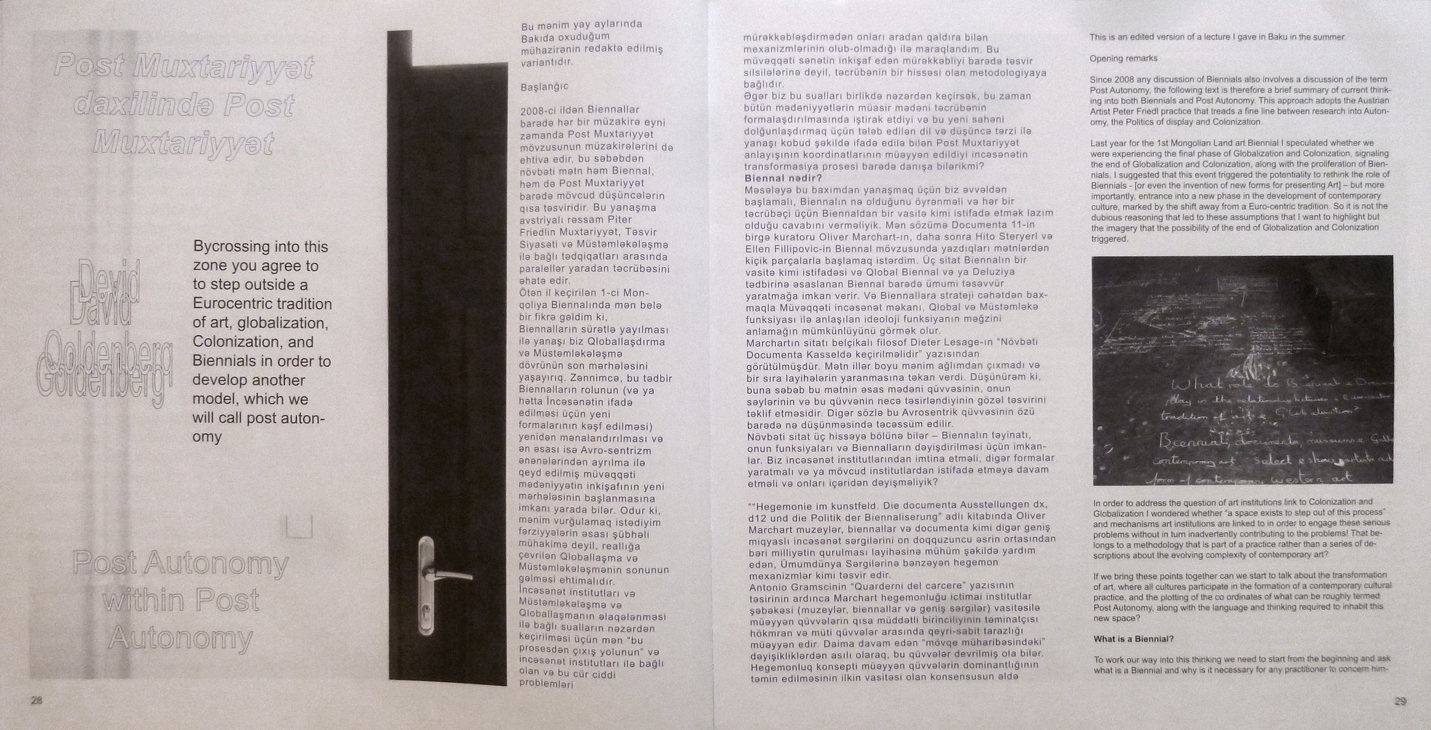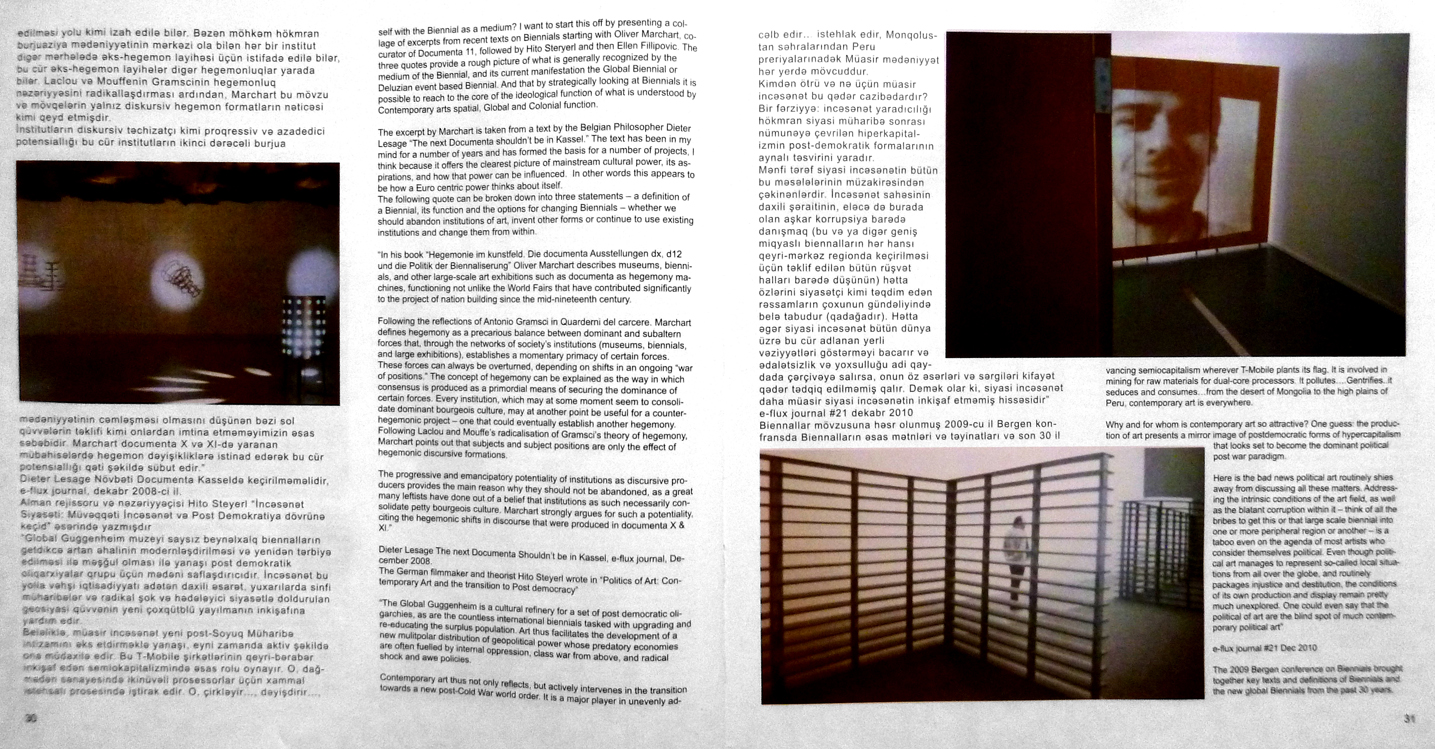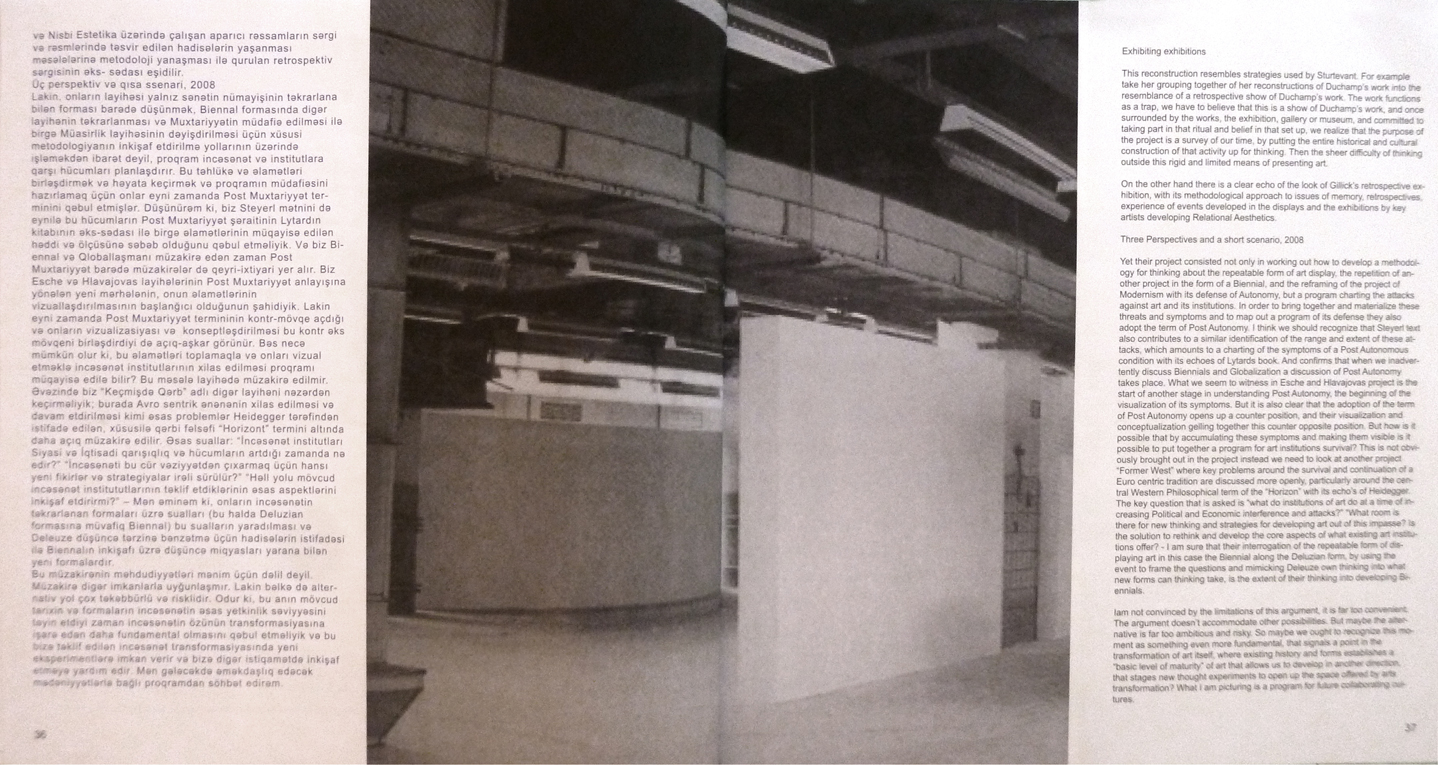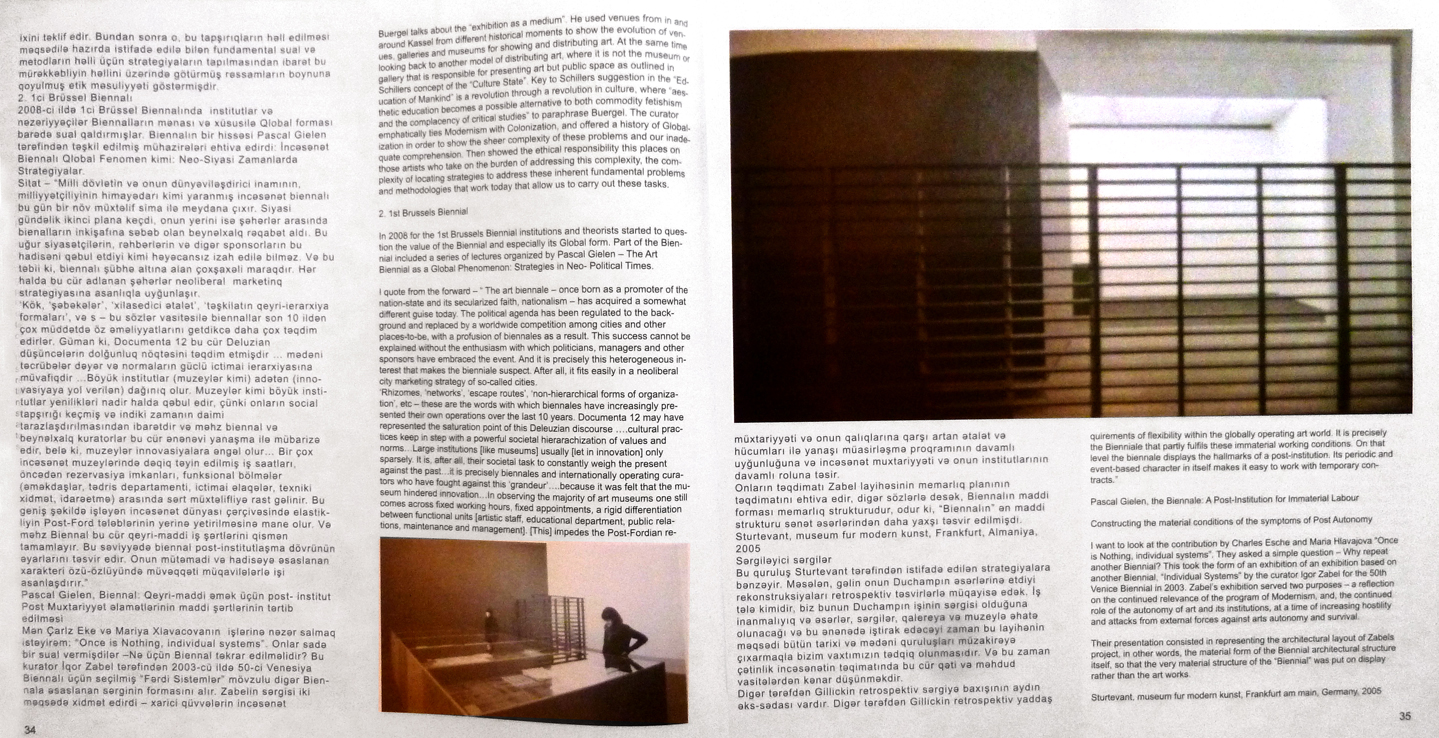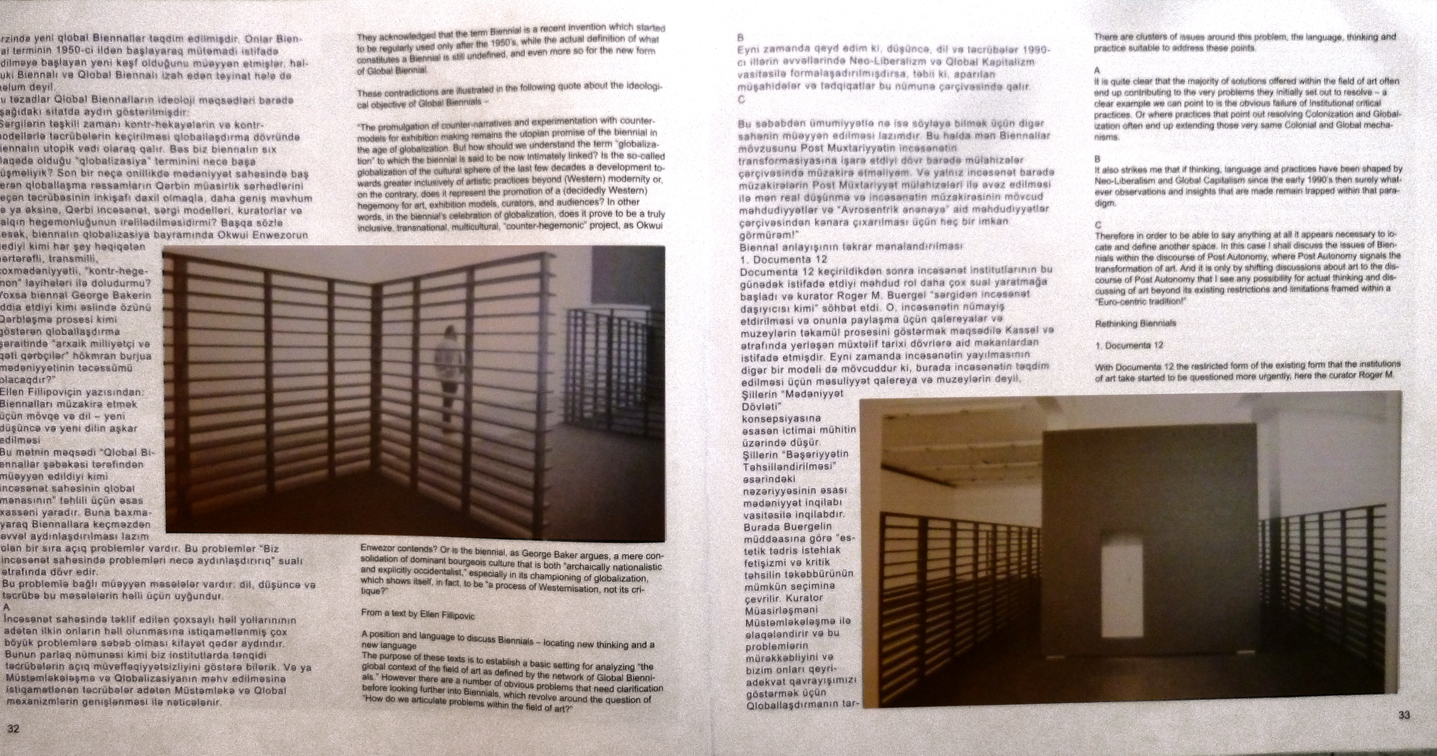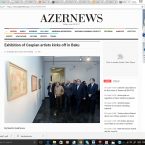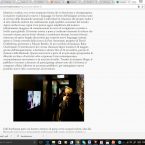Reviews
Bu yıl 2.si düzenlenecek olan Bodrum Bienali, dünyanın dört bir yanında gelen sanatçı ve sanatseverleri ağırlayacak. Bodrum’un kültür ve sanatına uluslararası katkı sağlaması beklenen bienal kapsamında İlhan Koman, Orhan Tekin, Meiko Kikuta, David Goldenberg, Said Adalı, Nurdan Erçin başta olmak üzere bir çok değerli sanatçının eserleri sanatseverlerle buluşacak. Ayrıca şair Cezmi Ersöz ve Özkan Mert de şiirleri ile Bodrum’u renklendirecek.
Ülkemizin tatil ve turistik beldesi Bodrum’u,Akdeniz’in çağdaş kültür beldesi de yapabilmek için 2 yıl önce 2013’de başlatılan Uluslararası Bodrum Bienali, dünyanın sayılı bienallerinden biri olma düşüyle ikincisini 12 Eylül- 12 Kasım 2015 tarihlerinde izleyicilere sunacak.
Cumhuriyetimizin genç kuşaklara emanet ettiği, sanat mirasına saygı olarak 14 yıldır yapılan ”Ekim Geçidi” sergilerinin sonucunda doğan ilk Bodrum Bienali’ne yerli ve yabancı toplam 50 sanatçı katılmıştır. 2. Bodrum Bienaline Bodrum Kalesi, Şevket Sabancı Kültür Merkezi, Osmanlı Tershanesi ve Myndos Kapısında olmak üzere 100 sanatçı yapıtlarını görüye sunacaktır.
Yapıtlarını sergileyecek sanatçılardan bazıları:
Dünyaca ünlü İlhan Koman, Zühtü Müridoğlu,Mustafa Aslıer,Judy Rifka, Said Adalı, Nilgün Bilge, Orhan Tekin,Larry Gomez, Nurdan Erçin, Özlem Kalmaz, Fazilet Kendirci, No min Bold, David Goldenberg…
Bienal Neyzen Tevfik kollokyumu Hıfzı Topuz ,yazar ve akademisyenlerin katılımı ile, modern dans , konuşmalar ve şiir dinletileri ile bu etkinliği zenginleştirilecektir.
Bienalin açılımı : Bienal Italyanca “her bir diğer yıl ” anlamina gelen ve iki yılda bir düzenlenen etkinliklere verilen addır. Çoğunlukla kültürel ve sanatsal faliyetler için kullanılan bir terimdir. En eski bienal 1895’ten beri duzenlenen Venedik Bienali’dir. Çağdaş son atakları, dünyadaki yaratıcıları halkla ve sanatseverlerle bütünleştirmektir. Bodrum Bienalinin özelliği :özgür, özgün, bağımsız oluşu ve Akdeniz de Venedikten sonra ikinci bir sanat ve kültür platformu oluşturması ve ilerde Türkiye’ye uluslararasi sanat ve kültür arenasında saygınlık kazandirabilmektir.
Bodrum Bienalinin kurucu yetkilisi Gülsün Erbil ‘ dir.
Bienal, toplam 4 mekanda yapılıyor: Bodrum Kalesi, Şevket Sabancı Kültür Merkezi, Myndos Kapısı ve Osmanlı Tersanesi’nde oluyor.
Bodrum Belediyesi ve Casa Dell Arte bu etkinliğe sponsor oldular. Ancak etkinlik diğer sponsorlarını da beklediğini duyurdu.
Art Forum 08.17.14
Left: Mobile Biennale curator Alexandru Niculescu. Right: Mobile Biennale curator Adrian Bojenoiu. (All photos: Kate Sutton)
“ALL OF THESE BIENNALES boast of being a forum for the exchange of ideas,” curator Adrian Bojenoiu, cofounder of the Mobile Biennale, reasoned over a Bellini and a tomato-mozzarella skewer on the steps of the Museum of Fine Arts in Craiova, Romania. “We thought to ourselves, if that’s the case, why not just put the emphasis on the ideas? Why even bother with the exhibition part?”
We had gathered to toast the launch of the Mobile Biennale, whose “emphasis on ideas” translated to packing a bus with around thirty potential idea-havers, -sharers, and -negaters for a seven-day tour across what some may see as the armpit—albeit, a well-formed, beautifully-groomed, entirely desirable armpit—of Romania. The biennial’s founders, Bojenoiu and artist Alexandru Niculescu, had earned street-cred as the minds behind Club Electroputere, an artist-run space based in the old cultural center of a factory that once produced locomotive engines. While many artists may have decamped to Bucharest or Cluj, Bojenoiu and Niculescu chose to double down in Craiova, a town whose substantial artistic legacy (it is home to some of the only early Constantin Brâncuşi works to remain in the country) is being mined for a revival of sorts, thanks to the race for the 2021 European Cultural Capital. According to Vlad Drăgulescu, director of Craiova’s campaign, “Everyone writes off Craiova as the underdog in the competition”—which includes frontrunner Cluj, Home of Painters—“but if you look at the criteria, category by category, Craiova comes out on top. Especially when you add the surrounding area of Oltenia!”
Left: Vlad Drăgulescu, president of the Association for Craiova Cultural Capital of Europe 2021. Right: Alexandru Niculescuand Cabaret Voltaire’s Adrian Notz pause along the Transalpina, outside Rânca.
The Mobile Biennale would take a closer look (and a gazillion Instagrams) of what Drăgulescu was talking about during its weeklong exploration of Oltenia. Club Electroputere had tried a beta version of the trip two years ago that attempted to cover all of Romania. “That was way too intense,” Niculescu confessed. “Romania is a big country.” Oltenia was a much more accommodating size, with a stunning mix of topographies—from the lush, boat-lined bays of the Danube, to the watermelon-bearing flatlands, to the pristine Transalpina, running along the ridges of the Carpathian mountains—all within a two- or three-hour drive.
The biennial’s championing of “Mobility” may have de-emphasized place conceptually, but that didn’t mean the participants—all either invited or selected through an open call—didn’t have every opportunity to play the tourist. The itinerary included a photo op at the Iron Gate II (which sounds straight out of Westeros, but is in fact a hydroelectric dam); a pilgrimage to Brâncuşi’s Endless Column at Târgu Jiu; and a brief respite at a chalet in Turcinești, where Niculescu and Dan Vezentan’s Cannibal Disco party featured a human-shaped mirror-ball roasting on a spit over red neon “flames.” Along the way, there were monasteries, mammoth caves, and hot springs galore, not to mention—crucially—outposts to replenish supplies of alcohol and cigarettes. And yes, there were the nightly presentations, more or less formal, though the real conversations raged over bottles of red wine and roadside tuică. Topics skittered from what it might mean for an artist to take responsibility for his or her work to whether an artist could ever effectively comment on another culture to who was left behind on a mountaintop (a conversation I missed, being one of the ones left behind on a mountaintop).
The first major stop was Port Cultural Cetate, a former agricultural port on the Danube, recently transformed into a lovely holiday haven and artist residency by its new owner, celebrity dissident, poet, writer, and sometime-vintner Mircea Dinescu. “The whole country has seen this house,” curator Raluca Velisar explained. “Dinescu hosts a talk show where he invites guests here and cooks a meal for them.” “Like Martha Stewart?” ventured Vilnius-based curator Juste Jonutyte. Velisar responded with a wry smile: “Not exactly.”
Left: MNAC (National Museum of Contemporary Art) curator Raluca Velisar at Cetate Arts Danube. Right: Artist Anca Bodea and Joana Grevers at the Cetate Arts Danube Atelier.
That evening would culminate in a midnight buffet served dockside to the sounds of Impex, a trio fronted by Dinescu’s violin-wielding son, Andrei Dinescu, who himself is best known as a member of Steaua de Mare (“Starfish”), popular for their electronica spin on Romanian folk music. First, however, we paid call to Cetate Arts Danube, the neighboring artist residency program launched by Joana Grevers, collector, patron, and founder of Bucharest’s 418 Gallery. The sprawling estate had belonged to her family before Communism. By the time Grevers was able to buy it back, many of the buildings had fallen into disrepair, including the magnificent stables, whose collapsed roof had allowed plants to colonize the building. Still, Grevers had managed to retool a hulking barn as the “Cetate Atelier la Dunăre,” a studio space for residents, and the property’s small chapel had been completely redesigned by architect Alexandra Afrăsinei. “I think it’s always best to start with a chapel,” Grevers mused, as we sipped a local rosé wine beside the lavender fields. (She could have said anything at that moment, and I would have agreed.)
The following evening we settled into a cabana outside Eșelnița, where, with a little ingenuity and a lot of extension cords, we were able to set up a riverside screening of The Ister, a 2004 film by David Barisonand Daniel Ross that travels up the Danube while revisiting Martin Heidegger’s interpretation of Hölderlin’s hymn to the river. As Bernard Stiegler voiced his thoughts on Prometheus on screen, across the river, Zeus himself decided to weigh in, unleashing one of the most stunning thunderstorms any of us had ever witnessed. The lightning began over the Serbian highlands, but it soon swept to the Romanian side of the river, eventually drenching the hotel with a downpour as mighty as the light show.
In the morning we would learn that the storm had flooded a large part of the region, leaving some of our route blocked. No matter. While participants were dutifully awed by official stops like the Tismana Monastery or the Rovinari open pit mines, we were just as content with spontaneous stops for cigarettes and alcohol. Smoke breaks were held in the strangest of places—on a speedboat in the Danube, in a cave outside the spa town of Herculane. “You know what they say,” chided architect Thomas Tsang. “When in Romania…”
Left: Steaua de Mare (“Starfish”) practices at Port Cultural Cetate. Right: Cannibal Disco party in Turcineşti.
Rumored to have been founded in 102 AD by Emperor Traian—responsible for the “Roman” in Romania—over the centuries, Herculane has hosted the elites of myriad empires, from Marcus Aurelius to Franz Joseph I and his wife Elizabeth (immortalized on film as Princess Sisi). During the land grabs of privatization, many of the town’s more jaw-dropping Austrian Baroque mansions were snapped up on the cheap, and now belong to people who can’t afford to maintain them, but refuse to let them go. “I mean, you could sink a million dollars into fixing up one of these buildings, but then you would never see that money again, so long as the rest of the infrastructure isn’t here,” illustrator Alex Neagu lamented. Perhaps the most impressive building of all, the Imperial Austrian Baths, sits boarded up, its badly-patched windows offering glimpses of the grandeur (marble tiles, gilded chandeliers, indoor fountains, etc) within, Upon discovering a door with its bottom panel kicked in, we couldn’t resist a little bathhouse B&E. Inside, the long corridors were lined with stall after stall of private baths where emperors could come to soak their troubles away. “Talk about a spot for a biennial,” Bojenoiu cooed, with an appreciative whistle.
On the last day, we fudged the rules slightly, slipping out of Oltenia and into the neighboring region of Transylvania to visit the home of artists Lia and Dan Perjovschi in Sibiu. Lia greeted us with platters of local delicacies and her home-brewed wonder tea, before indulging us with a tour of her archives, which she has organized by shelves: “The Earth, The Body, Science, Culture, The Universe…” The stacks of books were propped up by jars full of such museum store finds as a magnetic Obama finger puppet and a breath spray promising to help users “Understand Modern Art.” (“I don’t really care for that kind of irony,” she admitted, “but I thought it was important to acknowledge that it’s out there.”) The artist maintained that she is more strategic in her acquisitions than her “collector” husband. “Dan just wants to buy any and everything. I have to be more selective. I never buy anything above the budget of fifty euros,” Lia glanced affectionately at her spouse. “Dan’s more successful; he doesn’t have to think about budgets.”
Left: Artist Mihai Barabancea at a stop along the Transalpina. Right: Artist Jonas Lozoraitis at a stop along the Transalpina.
Lia envisions her archive functioning as a Knowledge Museum. “Knowledge is expensive, but knowledge is also survival,”she continued. “Someone asked me if I thought we had landed on the moon. Did we actually land? I believe we did. But if we didn’t…? What does it matter, whether or not we actually went there?”
One place the Perjovschis won’t be going is the MNAC, Bucharest’s Museum of Contemporary Art, which in 2004 relocated to the gargantuan Palace of the Parliament, the world’s second-largest administrative building (after the Pentagon), as well as its heaviest. “It’s like we’re in a village, where there’s one big house, and you make your parties, your funerals, and your politics all under the same roof,” Lia snapped. “Why the provincialism? We can afford to build these things their own buildings!”
Half the group had to catch the train to Bucharest, but Dan led the stragglers on a walking tour of shamelessly charming Sibiu, which already had its turn as Cultural Capital in 2007. Over a stop for—what else?—cigarettes and alcohol, talk turned to the next Mobile Biennale, which is considering a tour of Hong Kong. Even more pressingly, the MNAC had offered the Biennale an exhibition of its own this coming November. What would a biennial dedicated to ideas have to show for itself? “We’ll have to think about it,” Niculescu shrugged. And just like that, we were planning the afterparty.
— Kate Sutton
Left: Artists Dan and Lia Perjovschi pose in front of Lia’s Contemporary Art Archive in their home in Sibiu. Right: Artist and architect Thomas Tsang at the open pit mine in Rovinari.
Македонија
Галичка колонија 2014 во чекор со новите текови во уметноста
Девет афирмирани уметници од повеќе европски земји се учесници на годинашната 26-та по ред сесија на традиционалната Интернационална ликовна колонија Галичник, која се одржува од 15 до 22 август. И овој пат во фокусот се исклучиво „новите медиуми“ – фотографијата, дигиталната графика, фото инсталациите, видео артот и видео инсталациите.
20.08.2014
Дејвид Голденберг од Велика Британија (еден од минатогодишните претставници на Кралството на Венециското биенале), Катарина Банушевац од Србија, Романката Јоана Пиару, Маурин Бахаус од Холандија, Шпанецот Ајсберг Фернандез, Беким Корча и Јетон Муја од Косово, Бригита Антони од Црна Гора и нашата Ана Лазаревска, се уметниците кои во текот на изминатава недела, од 15 до 22 август, творат и дебатираат на годинешната 26-та по ред сесија на Интернационалната ликовна колонија – Галичник.
Станува збор за значајни и афирмирани уметници не само во земјите од кои што доаѓаат и кои имаат исклучителни творечки остварувања во своите богати биографии. Тие и овој пат, согласно интенцијата на организаторот да биде во чекор со најновите текови во уметноста, беа селектирани заради нивниот посебен интерес за „новите медиуми“ и инспирирани од традицијата, посебностите на крајот и воопшто на Република Македонија работеа фотографии, дигитални графики, фото-инсталации, видео арт и видео инсталации.
Ана Франговска, уметничката раководителка на Колонијата, истакнува дека изработката на делата е во завршна фаза и дека се работи во регионот Река, Маврово, Галичник… Вели дека патем направиле неколку посети на културните блага на Македонија како манастирот „Свети Јован Бигорски“ и дека им останува уште да го погледнат древниот Охрид со неговите единствени цркви и манастири.
„Можам да ви кажам дека по соочувањето со целокупниот нивни уметнички репертоар ова е една од поуспешните ликовни манифестации на Галичката колонија. Се надевам дека резултатот најдобро ќе може да се види откако делата ќе бидат финиширани, продуцирани и претставени пред македонската јавност, а тоа ќе се случи догодина на триеналната изложба на последните три сесии“, вели таа.
Франговска дополнува дека е убедена оти нивното гостопримство од една страна и убавините и културната традиција која што ја нуди Македонија, ќе придонесат кон надополнување на уметничкиот смер што овие творци си го тераат досега бидејќи сепак не станува збор за пејзажна колонија којашто се занимава со пренесување на визуелната убавина, туку сето она што тие го црпат од средината во која што се твори со сигурност ќе има рефлексии врз нивните понатамошни уметнички делувања.
„Како една од суштинските причини за постоењето на ваквите манифестации е секако и воспоставувањето на понатамошни линкови и поврзувања на уметниците. Сигурна сум дека по ова издание тие не само што ќе продолжат да се развиваат туку и ќе се мултиплицираат на различни нивоа“, вели Франговска.
Со слична размисла околу комуникацијата со останатите уметници е и Ана Лазаревска, која како единствен претставник од Македонија, на Колонијата продолжила да го развива својот проект инспириран од селата на Мијачкиот крај на кого работи цела една година.
„Се работи за фотографии во стари куќи. Тоа е мојата инспирација. Куќи коишто се напуштени или коишто нема кој да ги одржува. Овој проект трпеливо го развивам и крајниот продукт ќе ѝ биде предочен на публиката на претстојната изложба што наскоро ќе се одржи во Скопје“, вели Лазаревска.
l’Artibune 10th 2012 In search of Post Autonomy, Palazzio Isimbardi, Milan, Italy
http://www.youtube.com/watch?v=QN5qBQJq6N U
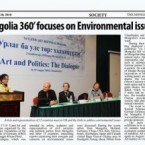
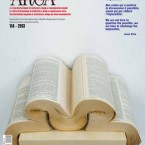
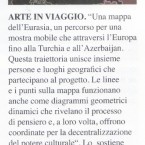
About David Goldenberg ‘s participation at he 55. Venice Biennale on L’Arca, international Architecture and Design and Visual Communication Journal, written byMichele Bazan Giordano. This year Venice Biennale is an Against-Biennale. What’s more ‘against’ than this supreme Goldenberg’s thought esperiment? http://www.pinterest.com/pin/286260120038525389/
http://www.artribune.com/2012/12/david-goldenberg-e-la-sua-in-search-of-post-autonomy-immagini-dalla-performance-a-palazzo-isimbardi-milano/# la mostra personale di David Goldenberg, The Scenarios of Post Autonomy alla galleria Glenda Cinquegrana: The Studio dal 18 settembre al 18 ottobre 2012 vista dalle telecamere del programma ARTV del canale CLASS CNBC. http://www.1fmediaproject.net/2012/09/18/david-goldenberg-the-scenarios-of-post-autonomy-glenda-cinquegrana-the-studio-milan/ http://www.padpad.eu/Detail_News_Display?
ArtClue – Eastern European Art magazine 24.11.2013 http://en1.artclue.net/david-goldenberg-at-pavilion/ http://visualartists.ie/advocacy/resources/infopool-2/professional-pathways/self-organisation-as-a-way-of-being/ Text by Paul O’Neal in Visual Artists Ireland
Self-Organisation as a Way of Being
Universes in Universe / Caravan / 6th Sharjah Biennial
URL: http://universes-in-universe.de/car/sharjah/2003/e-carver.htm
Sharjah enters the eye of the art storm
By Antonia Carver
“It’s all quite strange,” one Emirati student confided. “But I think I like it.” This turned out to be a typical reaction to the highly contemporary sixth Sharjah International Biennial. The efforts of Biennial director Hoor Al Qasimi, the support of her ruling family, and the work of London-based curator Peter Lewis had paid off: this was without doubt the most ambitious contemporary art event ever staged in the Gulf, possibly the Arab world. Against the backdrop of war in Iraq, and a sea of event cancellations in the Gulf, the month-long show brought together work by 117 artists from 25 countries. Incredibly, around 100 artists arrived for the openings on April 8 in the cavernous new Expo Centre and traditional Art Museum.
Sharjah is the most conservative of the UAE’s federation of seven emirates, dominated by oil-rich Abu Dhabi; in this, and its enthusiasm for art and culture, the city is a sharp contrast to the rampant commercialism and shiny high-rises of neighbouring Dubai, the tourism and business hub. Sharjah’s five previous Biennials have tended to concentrate on local and traditional artforms, especially painting. There are few public spaces to show art in the UAE, and artists often resort to exhibiting in shopping malls and offices. The few commercial galleries tend to feature tourist-oriented watercolour or oil landscapes. Within the Middle East, Bahrain and Amman are emerging, Beirut and Tehran have burgeoning art scenes, and Cairo an occasional biennial, but otherwise, the opportunities for contemporary artists to show ‘at home’ is limited.
All in all, the determination of Hoor Al Qasimi to reposition Sharjah alongside new contemporary art capitals such as Havana and Gwangju is remarkable. ‘My inspiration was actually Documenta,’ said the 23-year-old daughter of Sharjah’s ruler, ‘but I just didn’t expect to the [Sharjah] Biennial to be on the scale it is, I can’t quite believe what we’ve done here.’
Sharjah Biennial had all the hallmarks of an international contemporary art event, from a doorstop tome of a catalogue packed with artspeak to a minimalist café, via ‘bizarre’ performance art on the opening night. Local gallery visitors nervously avoided Motoko Ohinata’s ‘Rabbit Person’ nibbling a carrot on the Museum stairs, but delighted in Tatsumi Orimoto’s breadman performances.
Following recent international art traditions, it was video that hit the headlines, from Masharawi’s docos of the Intifada to Kentridge’s animated drawings. Palestinian film-maker Rashid Masharawi was commissioned to produce a new work especially for the Biennial. This was a wise move: his three-part ‘Shahrazad’ is an exceptional, unsettling portrait of the tension of daily life under occupation and as a refugee. Appropriately, he was rewarded with a Sharjah Art Prize. Art world darling William Kentridge also took home a major prize for his rich, animated films critiquing Apartheid and post-Apartheid South Africa. (His countryman Zwelethu Mthethwa also turned in admirable work.)
Other artists awarded by the panel included young British sculptor Jim Coverley, who was discovered by Hoor Al Qasimi at his London degree show two years ago, and UAE artist Mohammed Kazem, whose photography was everywhere, gracing most marketing material and the cover of the Biennial catalogue. The young Emirati made an ideal exhibition poster boy. His colour-saturated autobiographical photos explore the local’s relationship with his ever-changing environment.
Moving slightly further afield, Wejdan Salem Almannai’s canvasses packed with pins definitely bore out her desire to make ‘a concentrated sphere of slow pain’. She is one to watch. Pakistani artist Zain Mustafa was lucky enough to have his clothes line of 21 kurtas signed by Sharjah’s emir. The art-loving Dr Sheikh Sultan bin Mohammed Al Qasimi added ‘Silence the canons’ to the peace graffiti covering the torn traditional clothes.
Despite the plethora of artistic and political influences, it is possible to pull out a number of thematic strands. As befits shifts within the international art world, the Biennial had a strong Asian presence, spearheaded by the highly intelligent and engaging art of Tatsuo Majima.
Some of the most successful displays thoughtfully reacted to unfolding political events: Iranian-American Taraneh Hemami normally exhibits her old photographs printed on blocks of layered, mirrored glass in patterns on the gallery wall. For the Biennial, she filled her booth with a pile of rubble and inserted the blocks into the scene of war-like destruction. The images were donated by Iranians living in the US: each was a precious, vulnerable block of memories.
Other artist’s exhibits were tightly-curated displays of their own. Londoner Chris Grottick had the advantage of showing in the Museum a few years before: he designed a stunning video piece especially for the end of the long corridor. Upcoming German artist Klaus Fritze filled his space with thousands of newspaper clippings – faces snipped out, obsessively sorted and displayed in test tubes, on stalks and forks or hanging from clothes pegs. His overwhelming media museum was highly appropriate given the current glut of news from the Middle East. Sharjah-based Palestinian photographer Tarek Al-Ghoussein pulled out all the stops with his huge lightbox photographs, displayed in their own darkened mini-gallery at the Expo Centre. Autobiographical, the images document the artist in the UAE and Jordan, dressed in the emotive and highly symbolic kaffir.
London-based Zineb Sedira’s exhibition included a poignant, subtle set of photographs of her grandmother’s house in Algeria, accompanied by the immediacy of a three-part video piece. On separate screens, grandmother, mother and daughter spoke to each other in Arabic, French and English respectively, unflinchingly never seeming to understand one another. ‘That’s our lives!’ exclaimed a Dubai-based Jordanian-Palestinian colleague. Simply, directly, movingly, Sedira encapsulated the émigré experience. Among the many other artists examining ideas of nationhood and diaspora, Briton Beth Derbyshire’s installation ‘Babel’ also stood out as warm and thought-provoking.
Other artists’ work just fitted seamlessly into the Gulf environment. Iranian hotshot Farhad Moshiri’s cabinet of gold-plated trinkets (Mickey Mouse, mobile phones, porcelain figurines and so on) was an urbane wink at kitsch consumerism. The inspired installation found its natural home in the UAE, the place where, as AA Gill once wrote, ‘malls go on holiday’. Santu Mofokeng’s stunning photographs of advertising billboards in South African townships again delved deep, beyond a simplistic reading of consumerism. Another Iranian artist – Seifollah Samadian – also stole the show with his subtle and beautifully-composed video of a black chador-clad woman meandering, seemingly lost, in the white-out of a Tehrani snowstorm.
Beirut’s artist-theorists Jalal Toufic and Tony Chakar added intellectual weight to proceedings at the exhibition and symposium, where some fascinating papers grounded the work in the context of the Arab world. Unfortunately the debates were not widely publicised and attendance was low.
Against all this up-and-coming talent from the Middle East and its diaspora, the inclusion of time-honoured artists such as Christo and Jeanne-Claude – represented by photographs of famous site-specific projects from the 1980s – seemed almost redundant.
Despite the overwhelmingly enthusiasm from the visiting artists, a few gripes emerged. For some, installing work turned out to be a traumatic process, and on opening day, a few pieces remained unfinished. The curators’ theme of ‘new aesthetics, new practices’ was underdeveloped in parts. But these points are minor.
Sharjah is now on the world stage when it comes to contemporary art. Artists, and the few curators and gallerists that made the trip, agreed that the exhibition competed easily with more established biennials, and that showing their work in Sharjah was an enriching experience. Local audiences were ‘fresh’ to the work, many were viewing and appreciating it free of artworld theories or context. Returning to the show near the end of its run, the Museum was still attracting visitors, especially local women, some returning several times to absorb the shock of the new. The curators had a bold vision and were wise to include ‘censored’ work, even if it could not be openly displayed. (An obvious example was the collection of S Chandrasekaran’s cycle-of-life drawings: many of the small frames were flipped over, leaving it up to the viewer to peak at the image behind.)
Sharjah Biennial has the capacity to build on its reputation for grand forward-thinking and become the preeminent showcase for art in the Middle East, even if the centres of creation remain Cairo, Beirut, Tehran and – for diaspora artists – London and Paris. If the Biennial can cement its status as the pacemaker of Middle Eastern art, it could distinguish itself from other artfests and become a one-stop-shop for curators interested in the Middle East. Cynical or not, current political events have created a new thirst for complex visions of the region; many of the artists highlighted in the Biennial tell an alternative story to that of bombastic news reports. Perhaps spring 2003 will be remembered as the launch of a new era in contemporary art in the Gulf.








